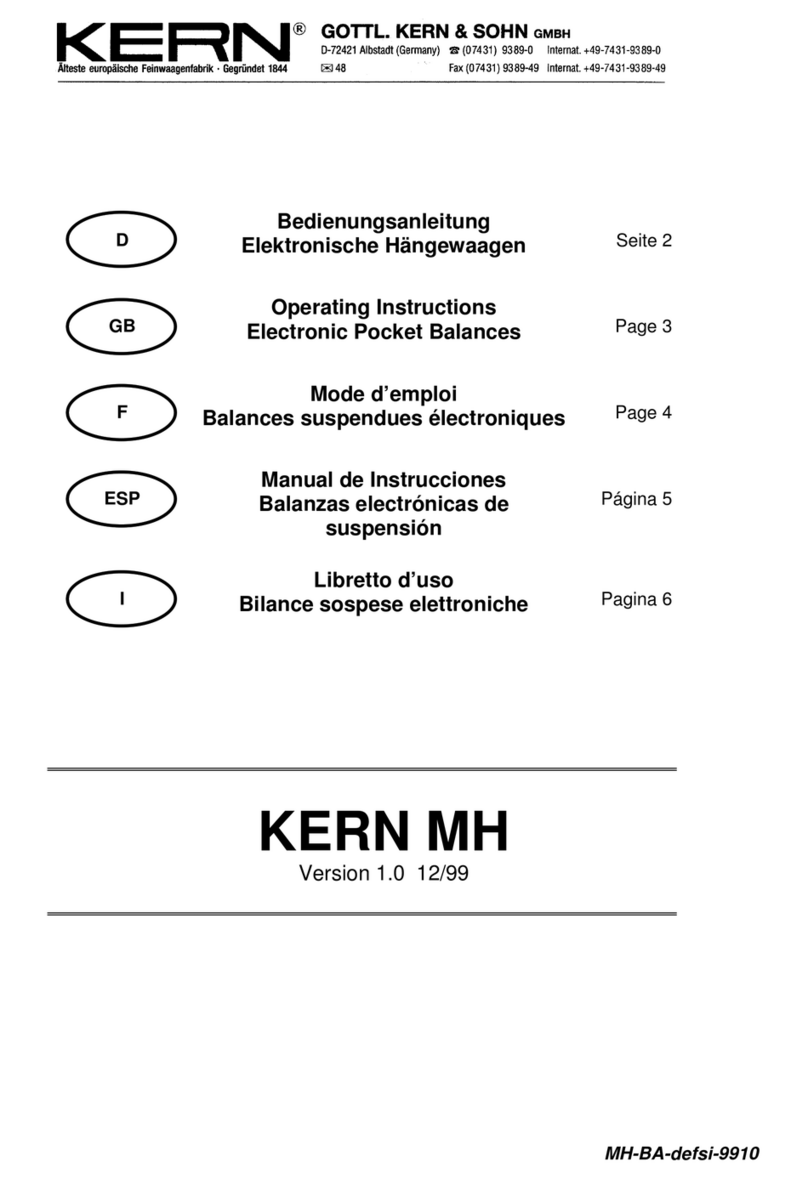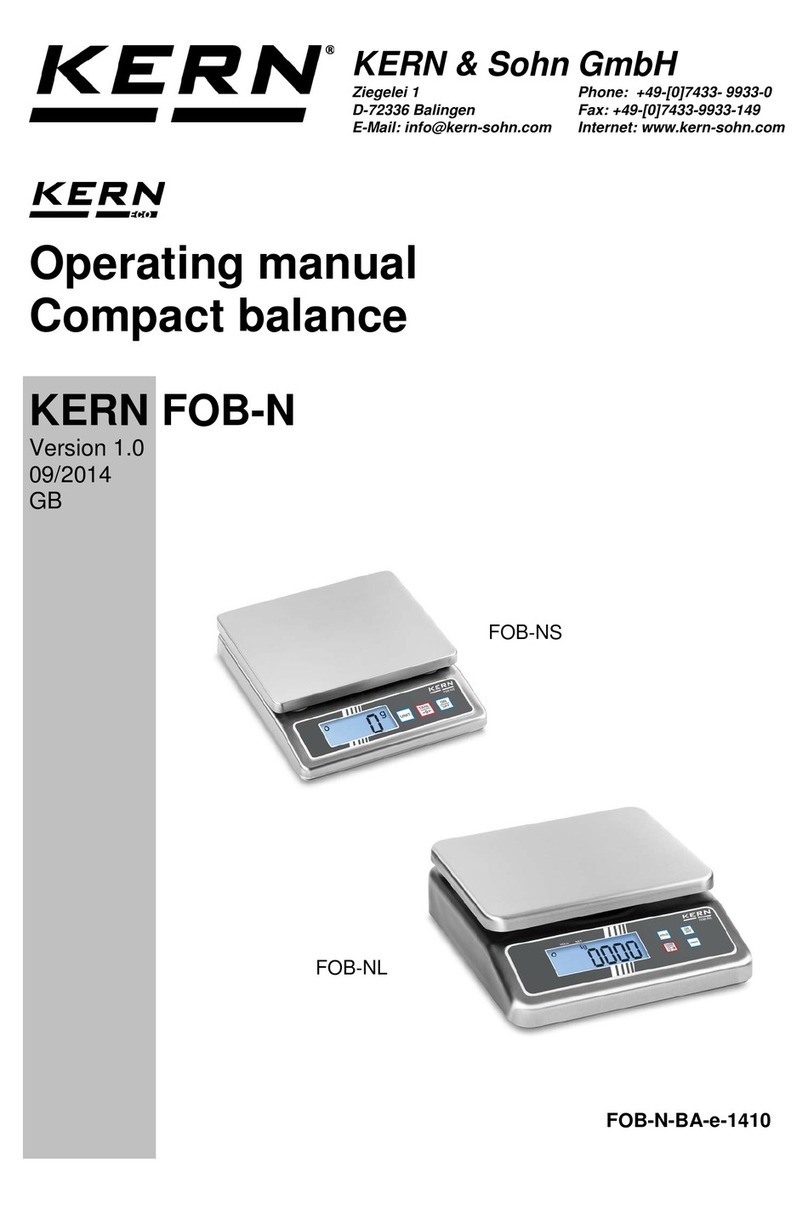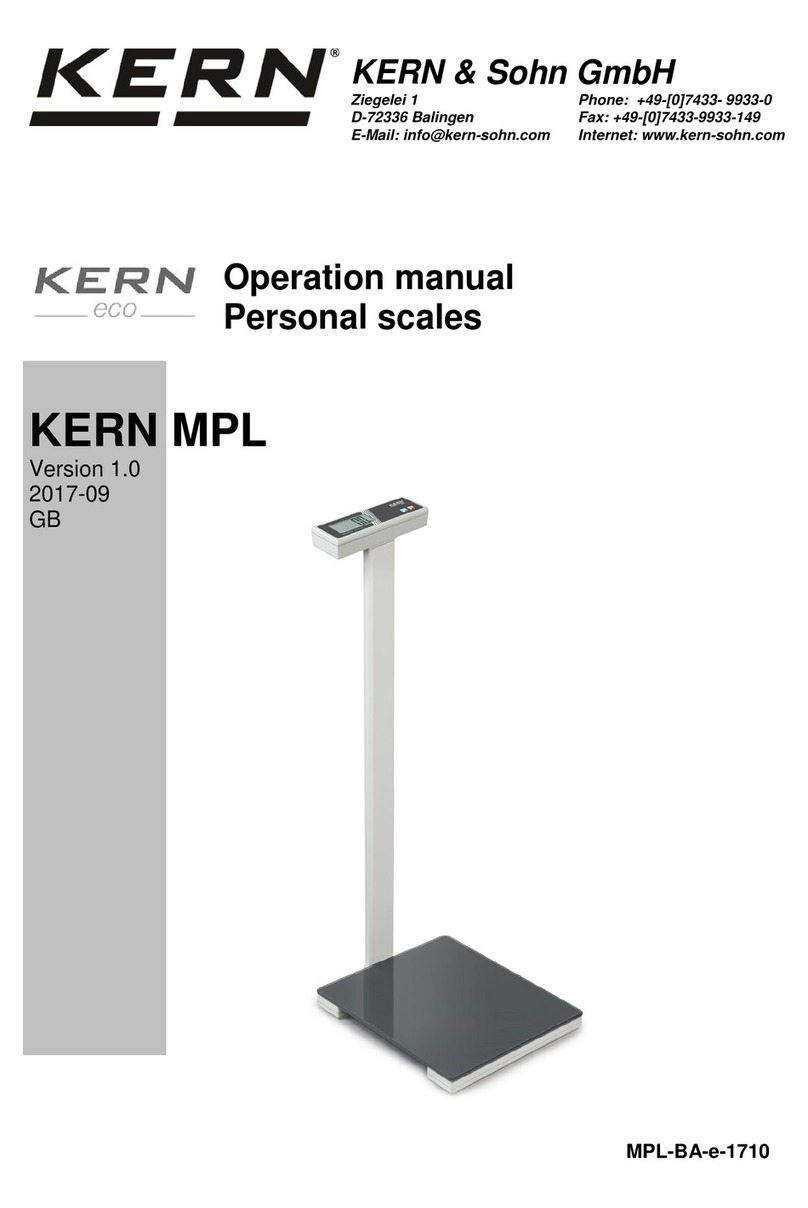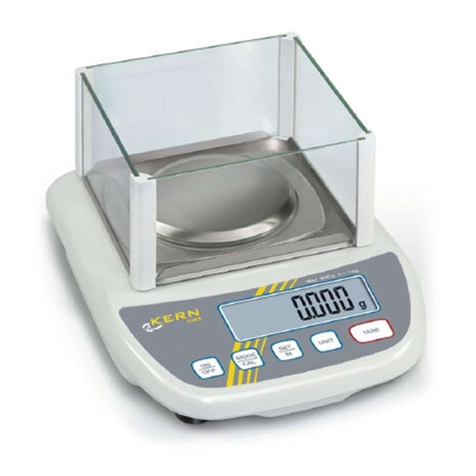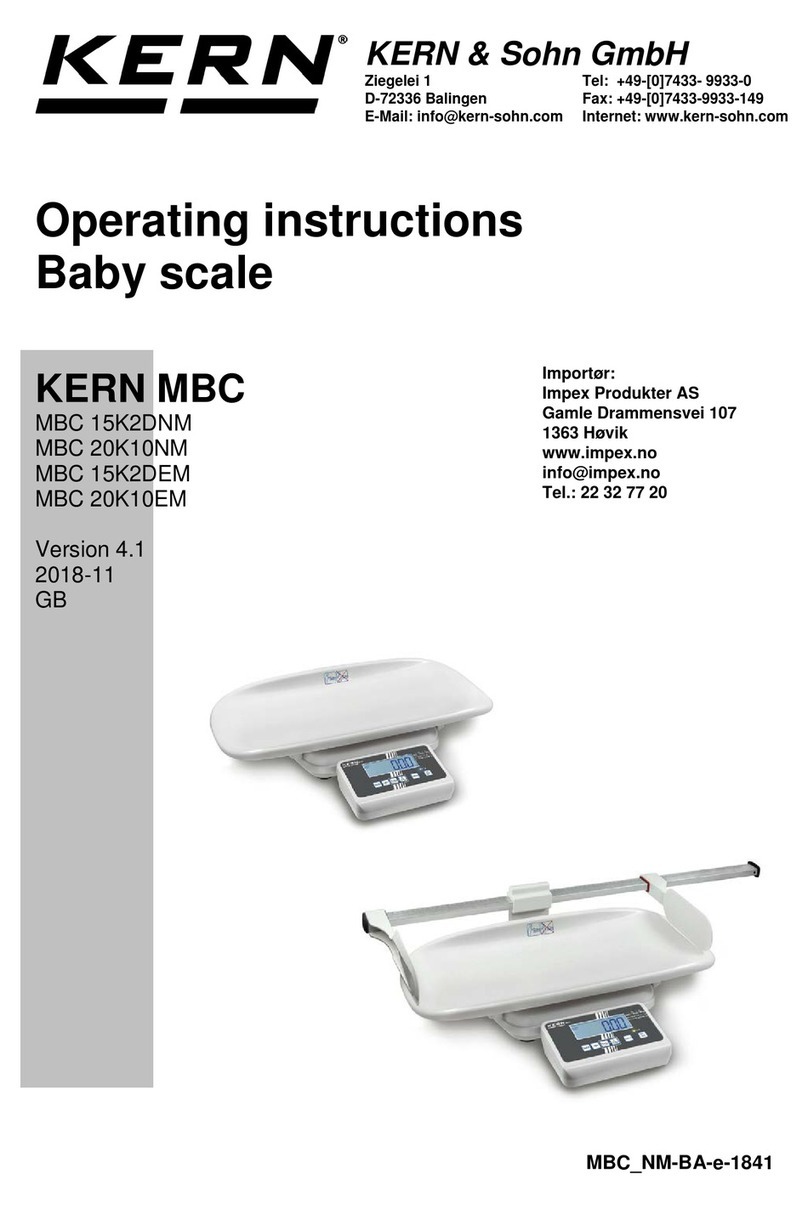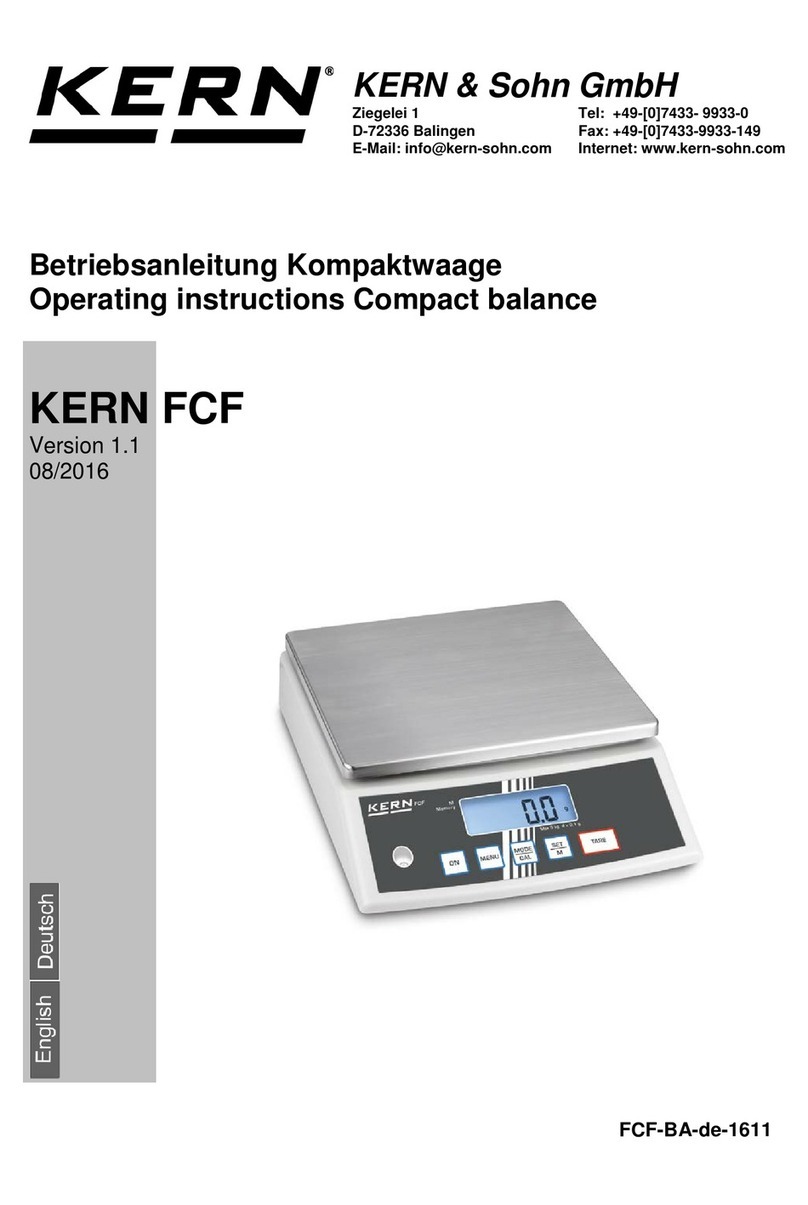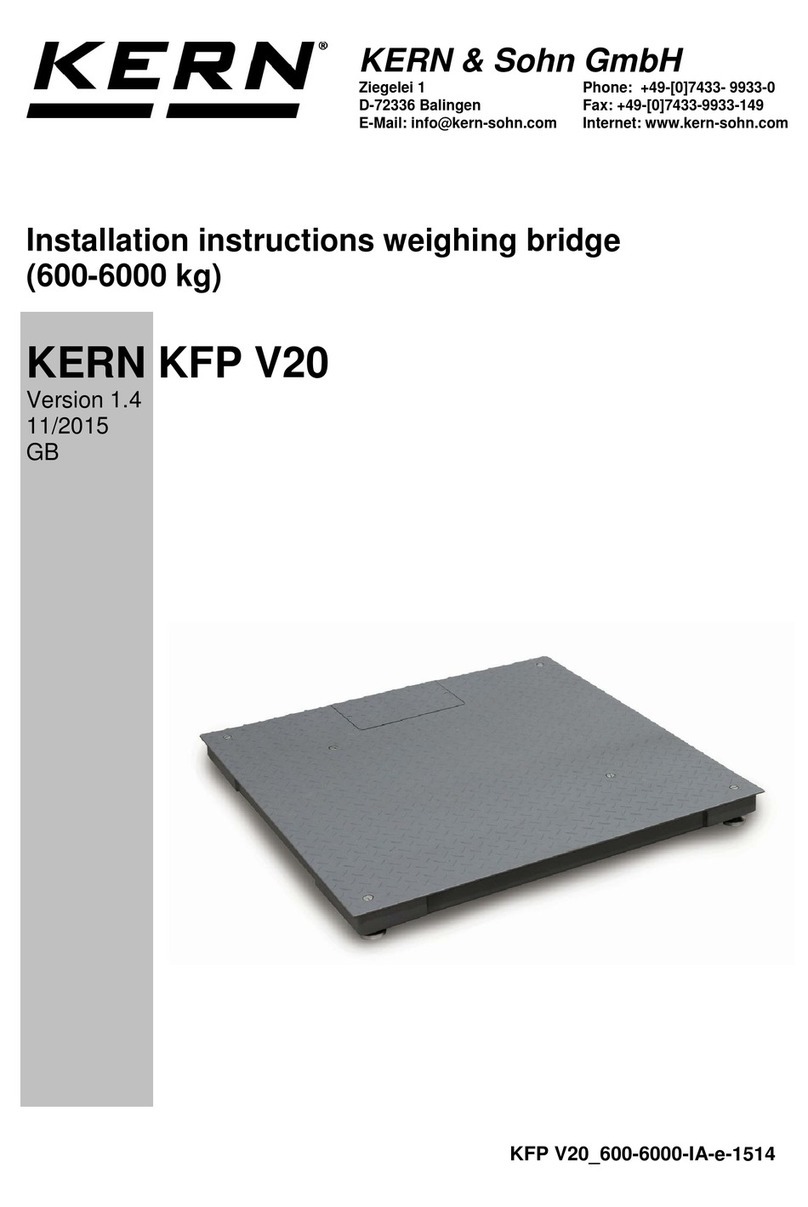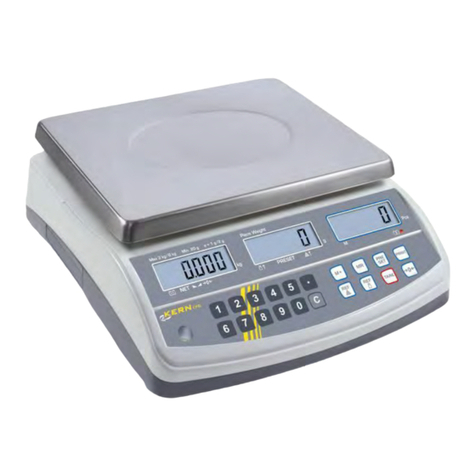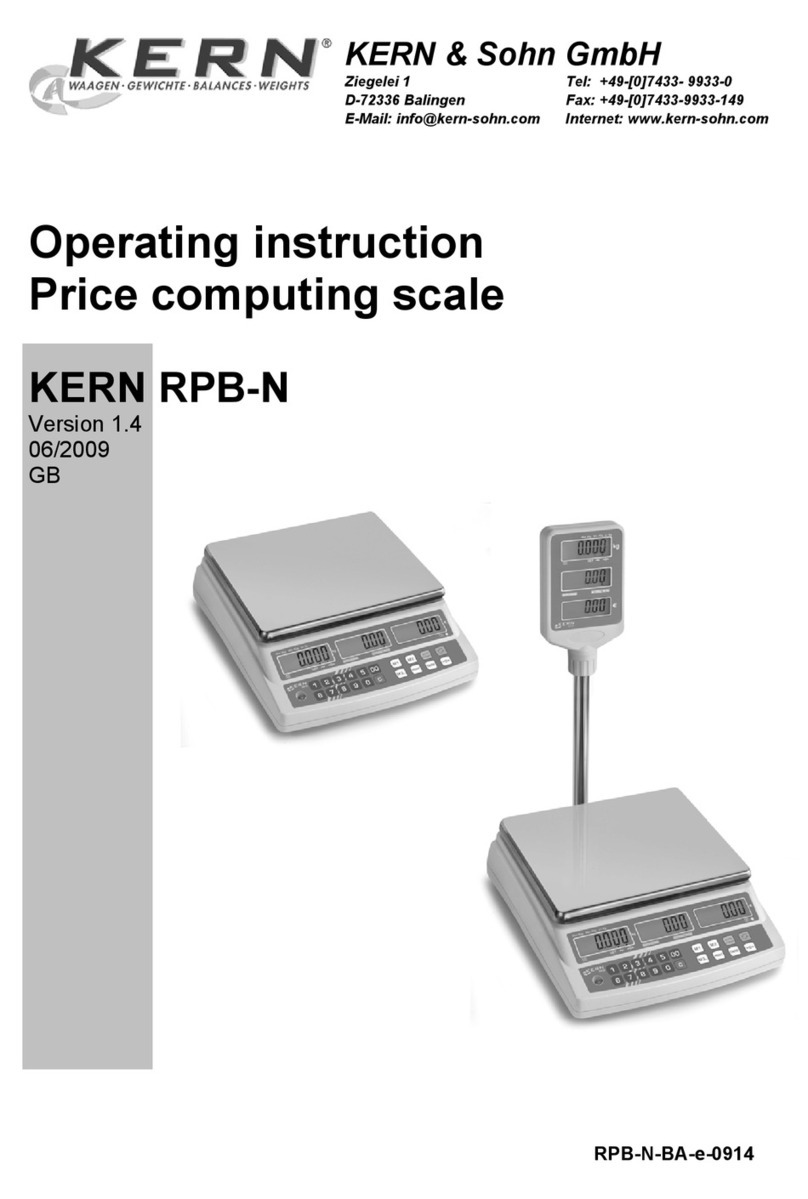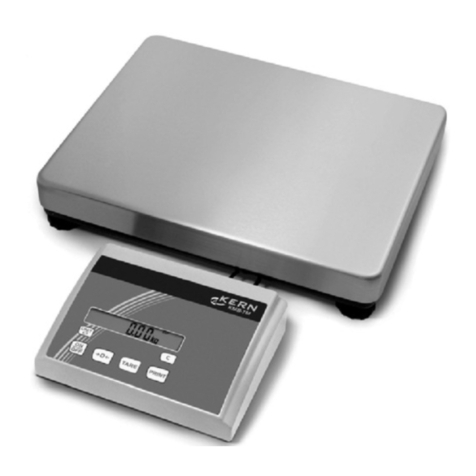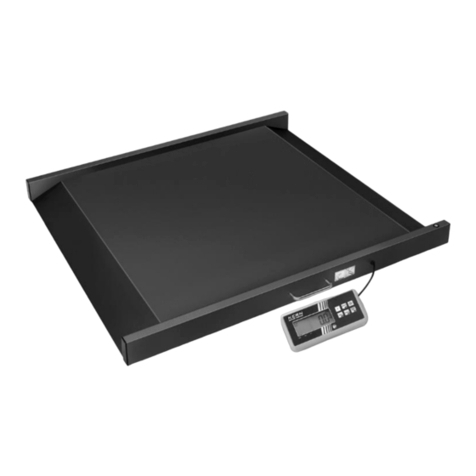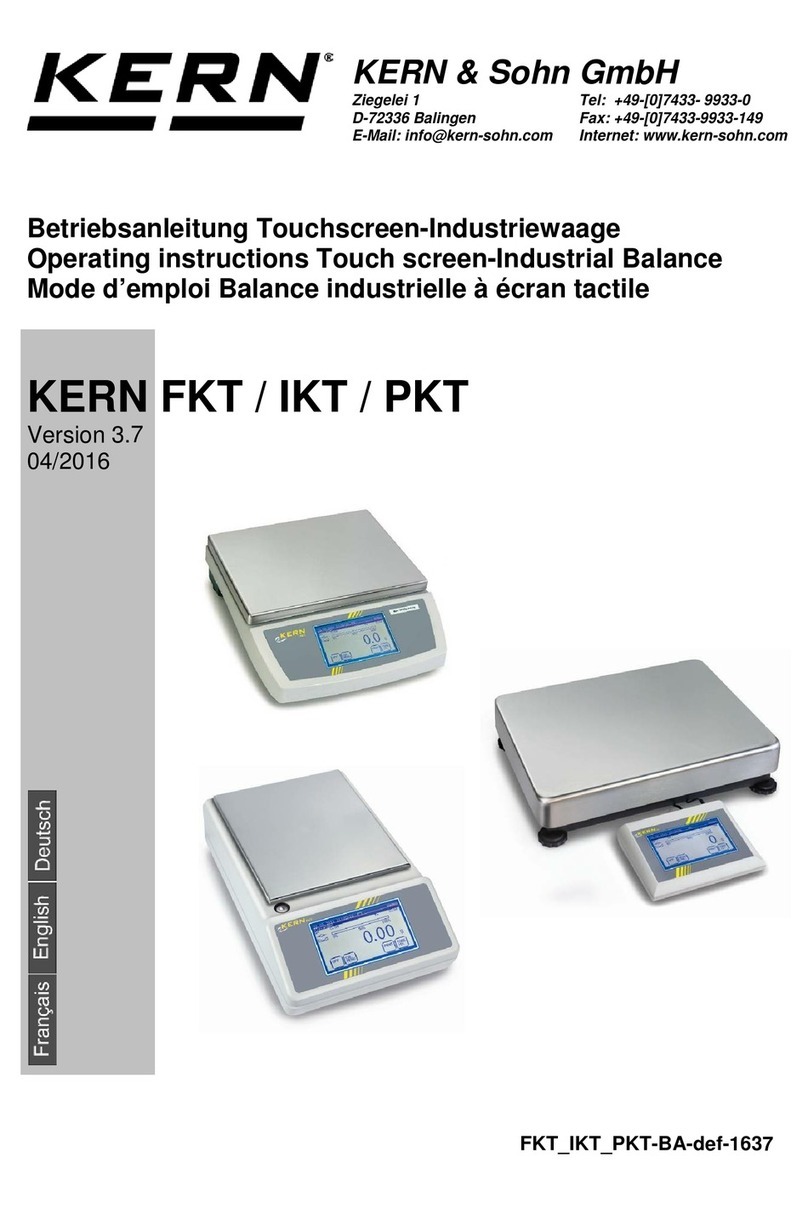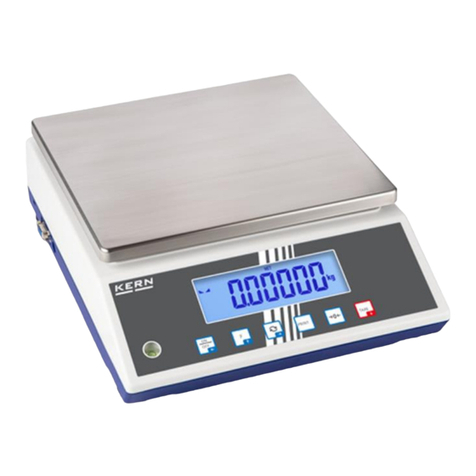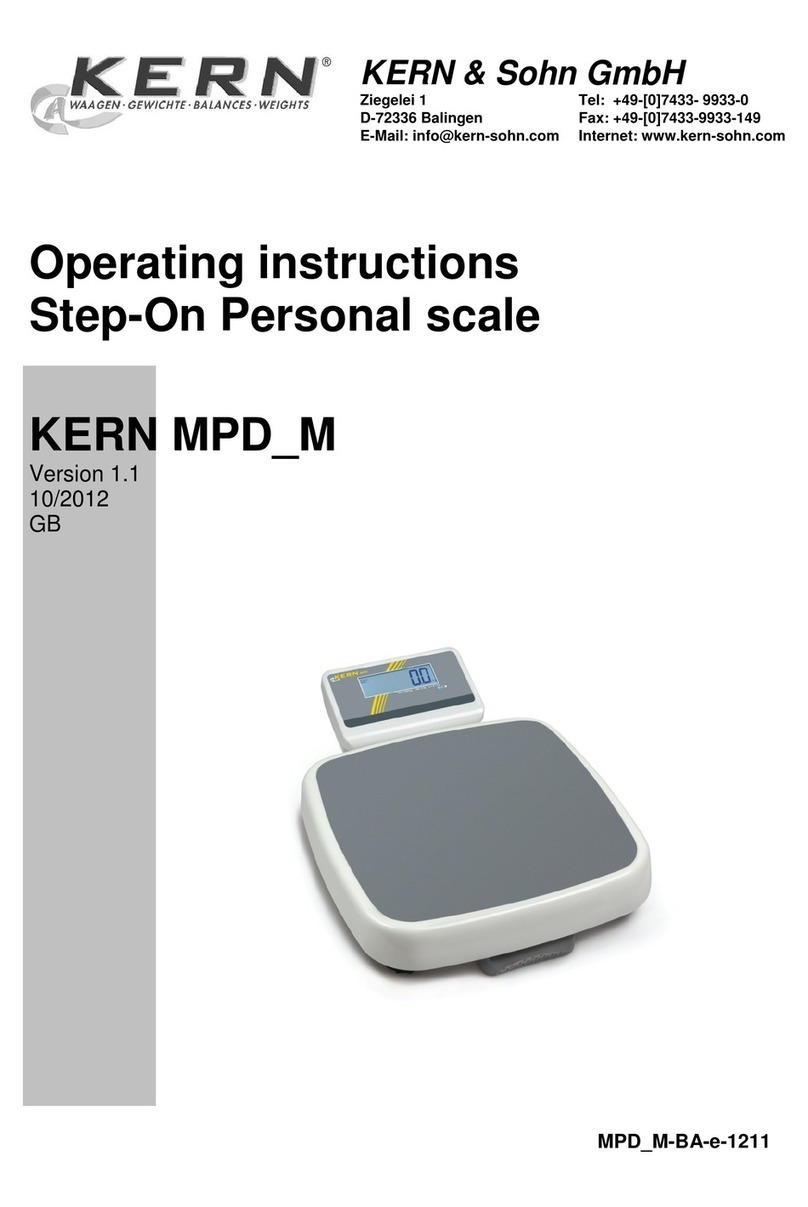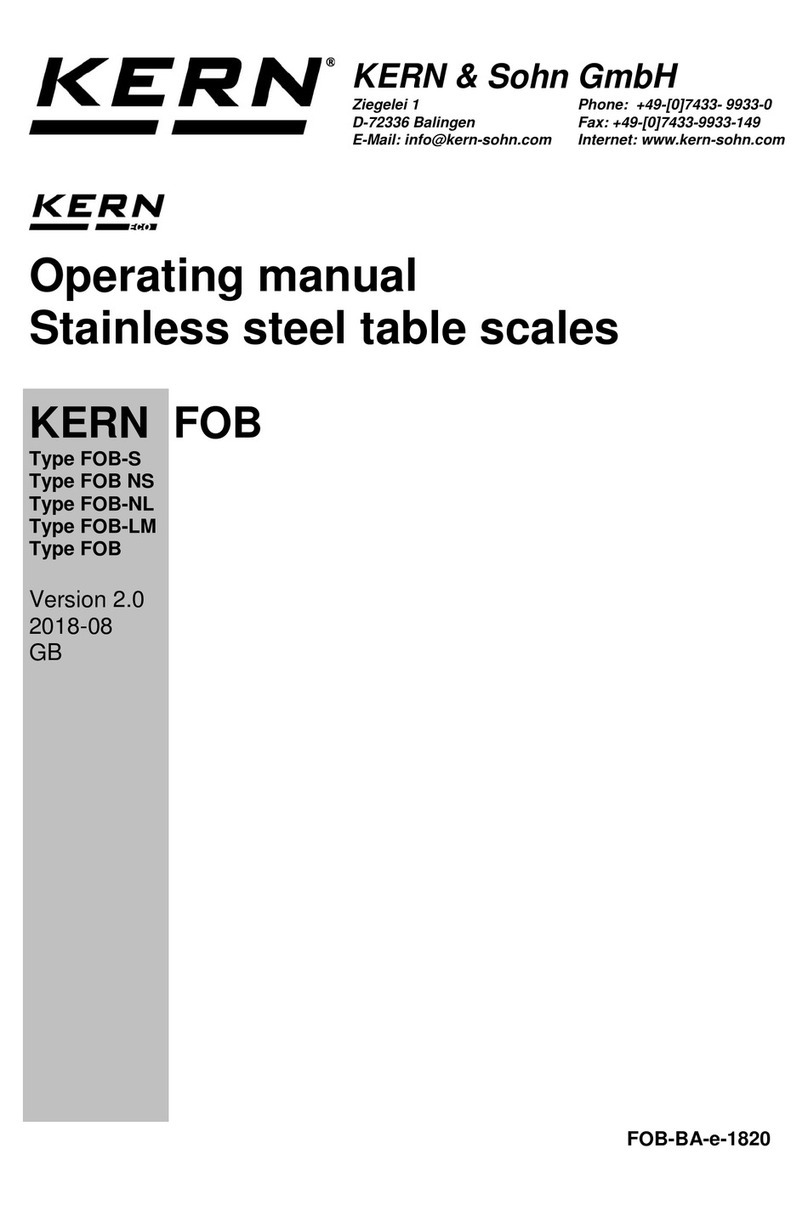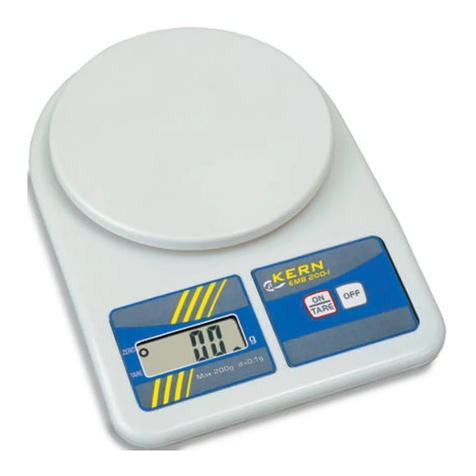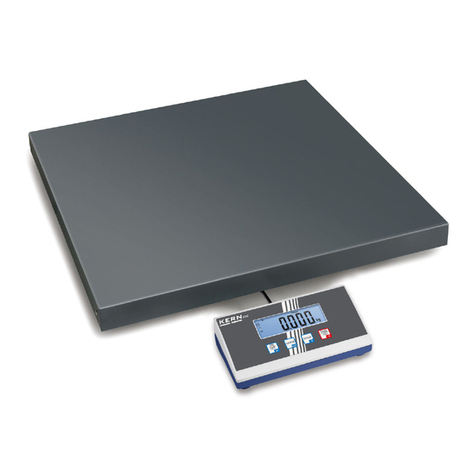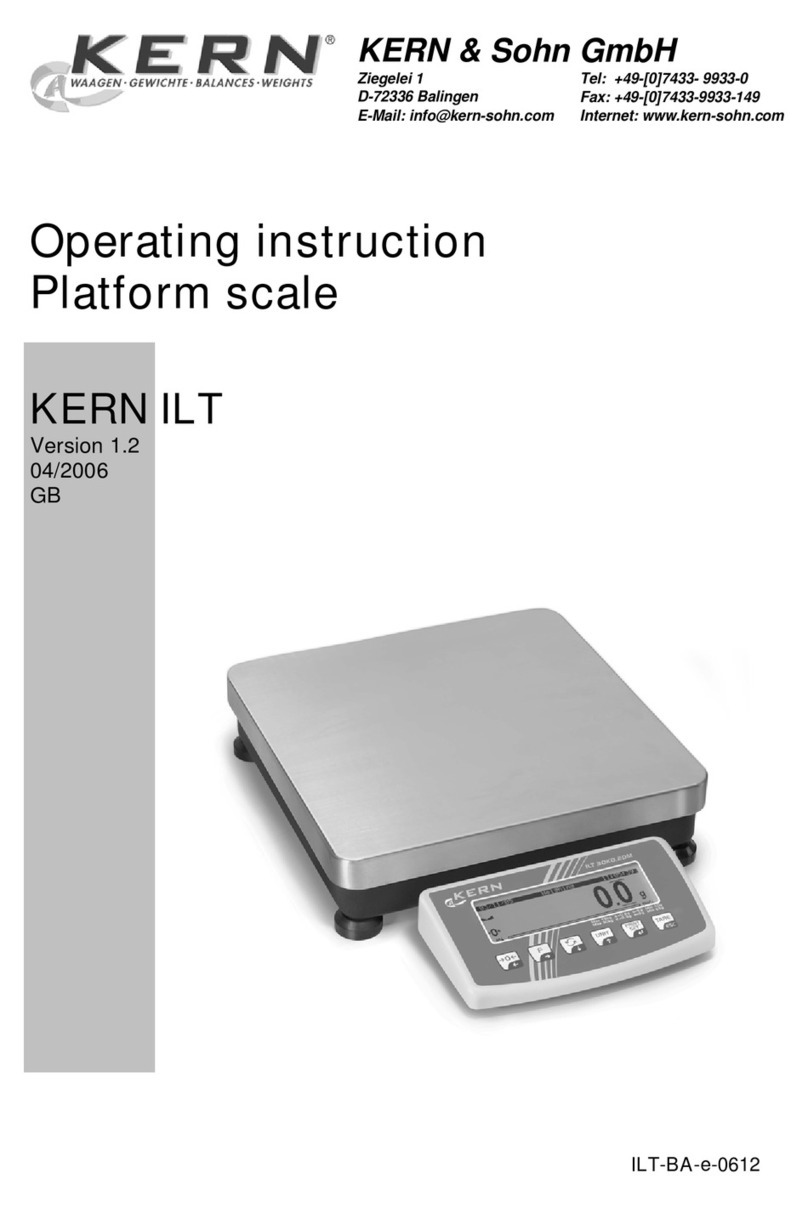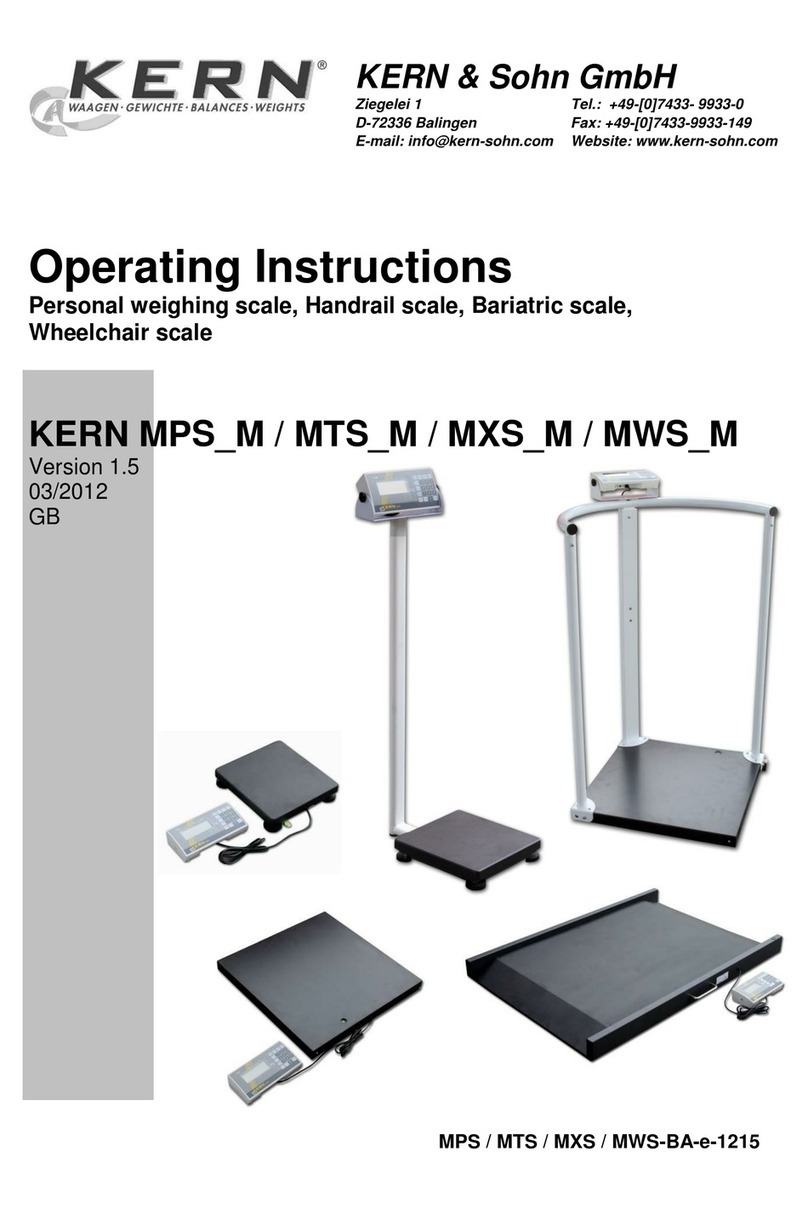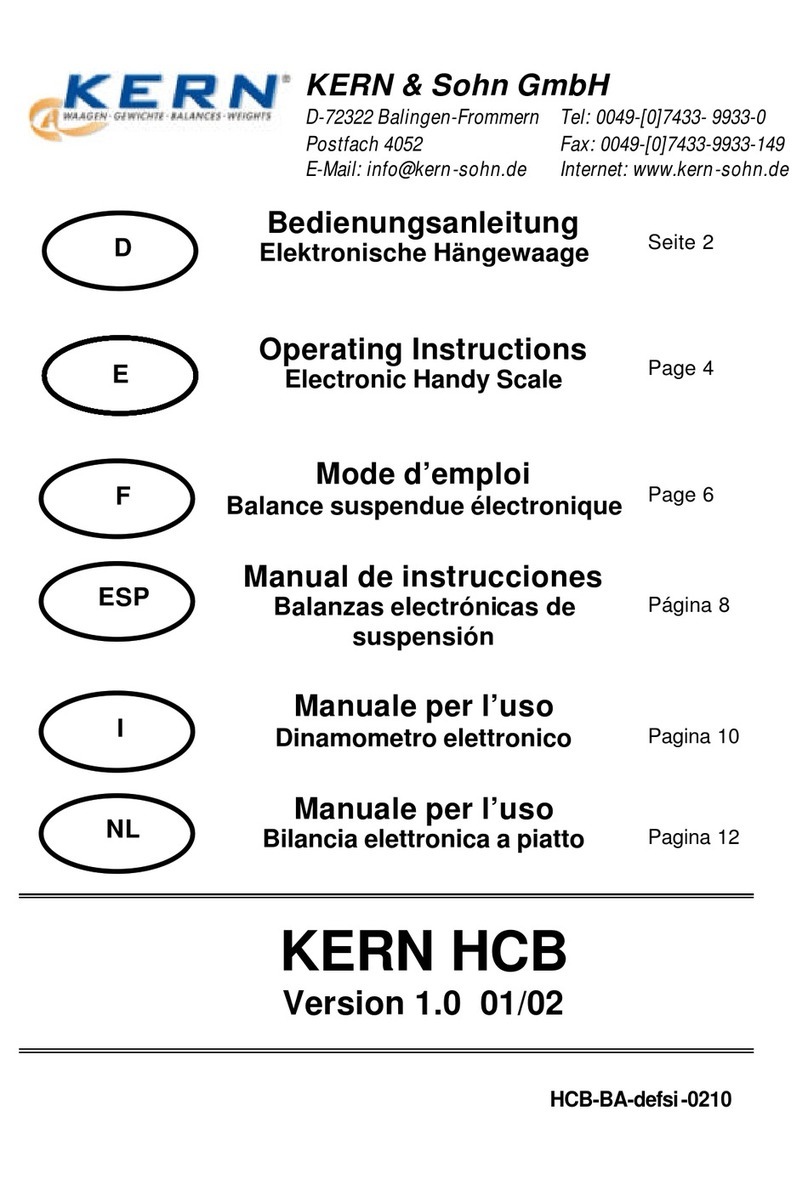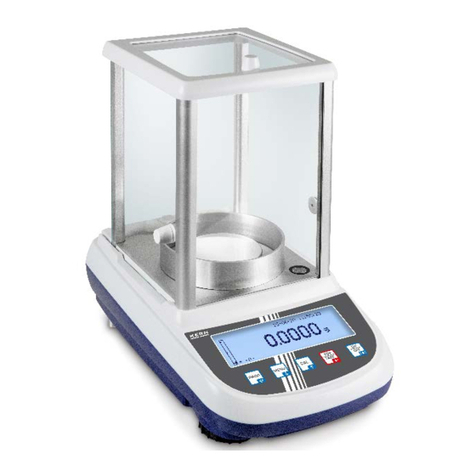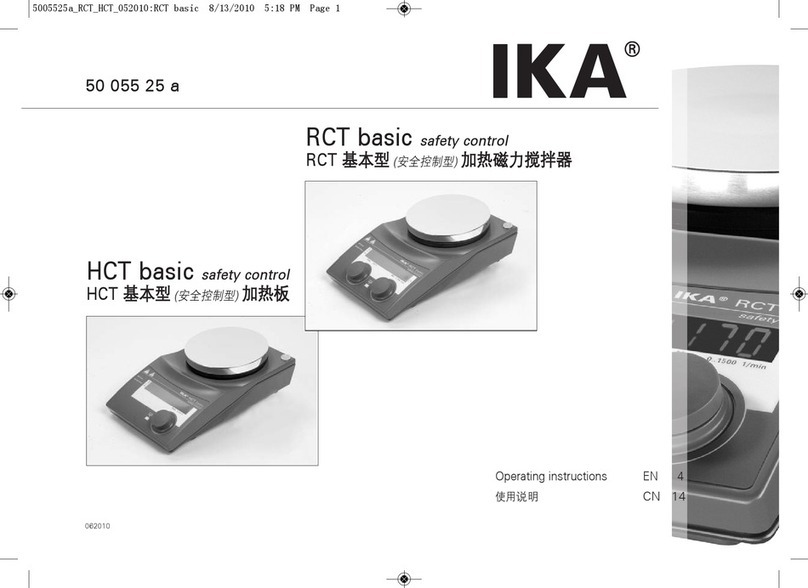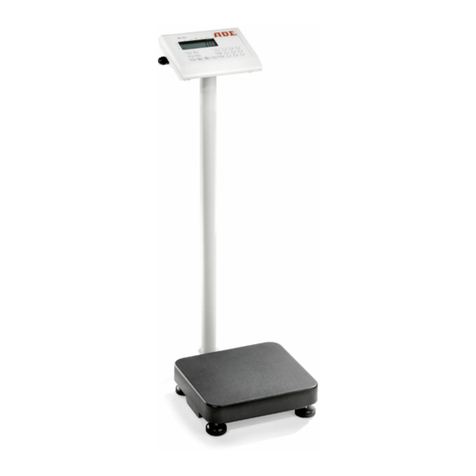GB KERN AEJ/AES
Version 1.0 4/2009
Service manual
Analytical balances
Table of Contents
1Basic information.............................................................................................. 3
2Total View........................................................................................................... 4
3Electric/Electronic Construction...................................................................... 5
3.1 Block Diagram ........................................................................................................5
3.2 Whole Wiring...........................................................................................................6
4Troubleshooting................................................................................................ 7
4.1 Troubleshooting Procedure...................................................................................7
4.2 Troubleshooting Table...........................................................................................8
4.3 Primary Check.......................................................................................................10
4.4 Check of Electric/Electronic Parts......................................................................11
5Adjustment and Setting.................................................................................. 13
5.1 Span Calibration (Adjustment with internal weight – AEJ) ..............................13
5.2 Span Calibration (Adjustment with external weight – AES).............................14
5.3 Verification switch and seals ..............................................................................15
5.4 Corner Error Adjustment .....................................................................................16
5.5 Linearity Adjustment............................................................................................17
5.5.1 Linearity Adjustment of AES 120-4 and AEJ 120-4M...................................................... 17
5.5.2 Linearity Adjustment of AES 220-4 and AEJ 220-4M...................................................... 18
5.6 Calibration of Built-In Weight (Ref Cal) – only AEJ...........................................19
5.7 Address Data Check and Re-setting...................................................................20
5.8 Adjustment of Overload Stopper ........................................................................22
6Parts Replacement.......................................................................................... 23
6.1 How to Remove the Case.....................................................................................23
6.2 The Sequence of HT-DP Board Replacement....................................................24
6.3 The Sequence of Mechanical Unit Replacement...............................................26
6.4 The Sequence of Tuning-Fork Sensor................................................................29
7Parts List.......................................................................................................... 30
7.1 Explosion Diagram...............................................................................................30
7.2 Bill of Material.......................................................................................................31
8Appendix.......................................................................................................... 32

